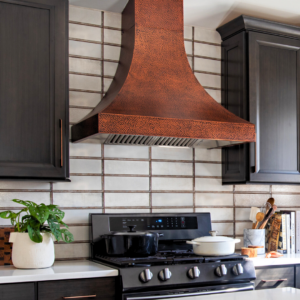Mastering Monochromatic Design to Add Vibrancy and Color to Your Home
February 17, 2024
In the interior design world and beyond, the allure of monochromatic color schemes has captured the hearts of many. It’s a classic approach to color theory in design that rarely misses–unless you focus on all of the wrong elements.
Let’s explore how to perfect a monochromatic room, and we’ll add in tips for infusing color seamlessly into your home.
Understanding Monochromatic Interior Design
You might be wondering: What even is monochromatic design?
A monochromatic color scheme uses the variations in lightness and saturation of a single color to create a stunning and cohesive design. This approach creates a harmonious look, providing a sense of unity to your home unlike any other.
In our opinion, the beauty of monochromatic design lies in its versatility—whether you prefer a serene and muted ambiance or a bold and vibrant atmosphere, the possibilities are truly endless.
Still not sure? Here are 20 Rooms That Make a Strong Case for Monochromatic Color Schemes (House Beautiful).
Our Monochromatic Interior Design Ideas and Tips
1. Choose the Right Color Palette: The first step in creating a monochromatic room is selecting the perfect color for you. Consider the mood you want to evoke and the room’s purpose. For a calming living room, explore the serenity of a blue monochromatic color scheme. In contrast, a fiery red could infuse energy into a home office or kitchen.
Need more context? Here’s How to Mix Colors, Patterns, and Textures in Home Interior Design.
2. Play with Shades and Tones: A successful monochromatic room isn’t about using a single color in its purest form. Experiment with various shades and tones to add depth and visual interest. For instance, in a purple monochromatic living room, blend light lavenders with rich plum hues for a captivating effect.







3. Incorporate Textured Elements: Monochromatic rooms thrive on texture to prevent visual monotony. Introduce texture through fabrics, furnishings, and décor. Think plush throws, fuzzy rugs, and textile accent pillows to create a tactile experience every time.
How to Style Your Monochromatic Space with Additional Colors
Now that you’ve established the elegance of a monochromatic room, it’s time to explore ways to add color without deviating from the scheme.
1. Accent Furniture
Introduce a pop of color through accent furniture. Whether it’s a vividly hued armchair or a statement coffee table, strategically placed furniture pieces can become focal points, breaking the monotony of a monochromatic living room.
2. Artwork and Wall Décor
Adorn your walls with artwork that incorporates complementary colors. A strategically placed painting or a gallery wall featuring vibrant hues can breathe life into your monochromatic room. Think of it as creating a secondary visual story that complements your chosen color hero.
Need to know more? Here are 23 Complementary Color Schemes that Will Make Any Room Pop (Better Homes & Gardens).
3. Bold Accessories
Small yet impactful, accessories play a crucial role in adding color to monochromatic spaces. Experiment with bold throw pillows, vibrant vases, or statement lighting fixtures that can seamlessly integrate with the overall color palette.
4. Indoor Plants
Nature’s palette is vast and varied, making indoor plants an excellent choice for introducing color. Greenery not only adds a refreshing touch but also brings a sense of balance to the room.
Are you a plant lover like us? Learn more about The Emotional Power of Plants on Our Lives.
5. Strategic Rug Placement
A well-chosen rug can be a game-changer. Opt for a rug that incorporates accent colors while staying true to the monochromatic theme. This not only anchors the space but also introduces a captivating layer of color.
Are Monochromatic Rooms a Good Idea?
Monochromatic rooms are transforming homes into sophisticated spaces, and have done so for quite some time. With the right approach to color selection and thoughtful variations from the palette, you can elevate your living spaces beyond your expectations.
As humans, we are drawn to the way monochromatic design flows in and out of itself. This approach can take a busy, cluttered space and make it feel less chaotic simply through its use of color. The key lies in balance, creativity, and a dash of boldness.
Feeling inspired? Our Cincinnati-based interior design team is here to help curate your space. Chat with us and turn your monochromatic dreams into a colorful reality!



